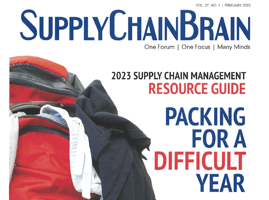Analyst Insight: After three years of pandemic-driven disruptions, supply chain executives are...
Aerospace/Defense Supply Chain Process Maturity and Raw Material Vulnerability
Analyst Insight: After three years of pandemic-driven disruptions, supply chain executives in aerospace and defense are now developing their 2025 strategies, which must contend with high inflation, potential economic slowdown, talent shortages, raw material constraints and ongoing global uncertainty. Many executives are re-evaluating their product portfolios, and entertaining the thought of re-scaling their supply chains, based on concerns over China’s chokehold on many rare earth minerals.
The Inconvenient Truth about Raw Material Clustering Supply chain clustering takes place when technology, capital, research institutions and a highly skilled workforce are concentrated, creating an ecosystem that drives innovation and growth. Benefits include better efficiency, innovation, and enhanced economic scope and scale. However, clustering can lead to an overreliance on a single region for critical materials, exposure to significant risks if the cluster faces disruption, geopolitical tensions, and economic instability.
Recent supply chain mapping studies have revealed some startling statistics on the origin of critical raw materials, such as copper, nickel, aluminum, lithium, cobalt, manganese, natural graphite, and rare earth minerals like gallium, germanium, titanium and niobium. China produces 98% of the world’s gallium and 68% of the world’s germanium, and most of these are critical to the aerospace and defense industry. One recent study found that one of the U.S. Navy’s aircraft carriers operates with over 6,500 Chinese chips, and another — the U.S. Navy’s new F/A-18 Hornet — uses around 5,000 Chinese chips. A recent Bain Consulting study noted that there has been a sharp increase in companies’ plans to bring supply chains closer to home. In 2022, about 63% of respondents said they were planning to do just that. In 2024, over 81% mentioned they planned to do that as well.
Supply Chain Process Maturity Improvement Ensures Resiliency
The aerospace and defense manufacturing base, or Defense Industry Base (DIB), is made up of only a couple large original equipment manufacturers (OEMs), and thousands of small-medium manufacturers (SMMs). The sector is exacting, highly specialized in terms of military specifications, and maintains deep bills of materials. Since 2019, many middle market companies that make up the backbone of the DIB have filed for bankruptcy — about four times the number of large organizations. Studies from Rapid Ratings showed that from 2019 to 2022, EBITDA declined by over 20% in middle market companies, with many DIB SMMs choosing to exit the defense arena altogether. This financial study covered four major sectors, including aerospace and defense (A&D). It found that from 2019 to 2023, the SMMs in the A&D sector had a diminished financial score equating to about -30%. The OEMs, in the same study, had a diminished financial score of only -17%. And finally, another study covering supply chain process maturity by MxD of Chicago, a company that manages manufacturing/technology grants for DoD, highlighted that the A/D OEM’s supply chain process maturity was far and away more mature than their SMM’s. These issues are strategically important.
Resource Link: www.thescrmconsortium.com
Outlook: How to mitigate strategic risks for aerospace and defense companies? Look for more emphasis on designing and incentivizing capital investments, continued development of a talented technology workforce, building out infrastructure, improving supply chain visibility down to Tier-n suppliers, providing favorable regulatory permitting and perhaps continuing of near shoring, friend shoring and more. Why? Improving supply chain process maturity and enhancing visibility ensures a company’s resiliency and protects national security in an ever-changing VUCA world.


